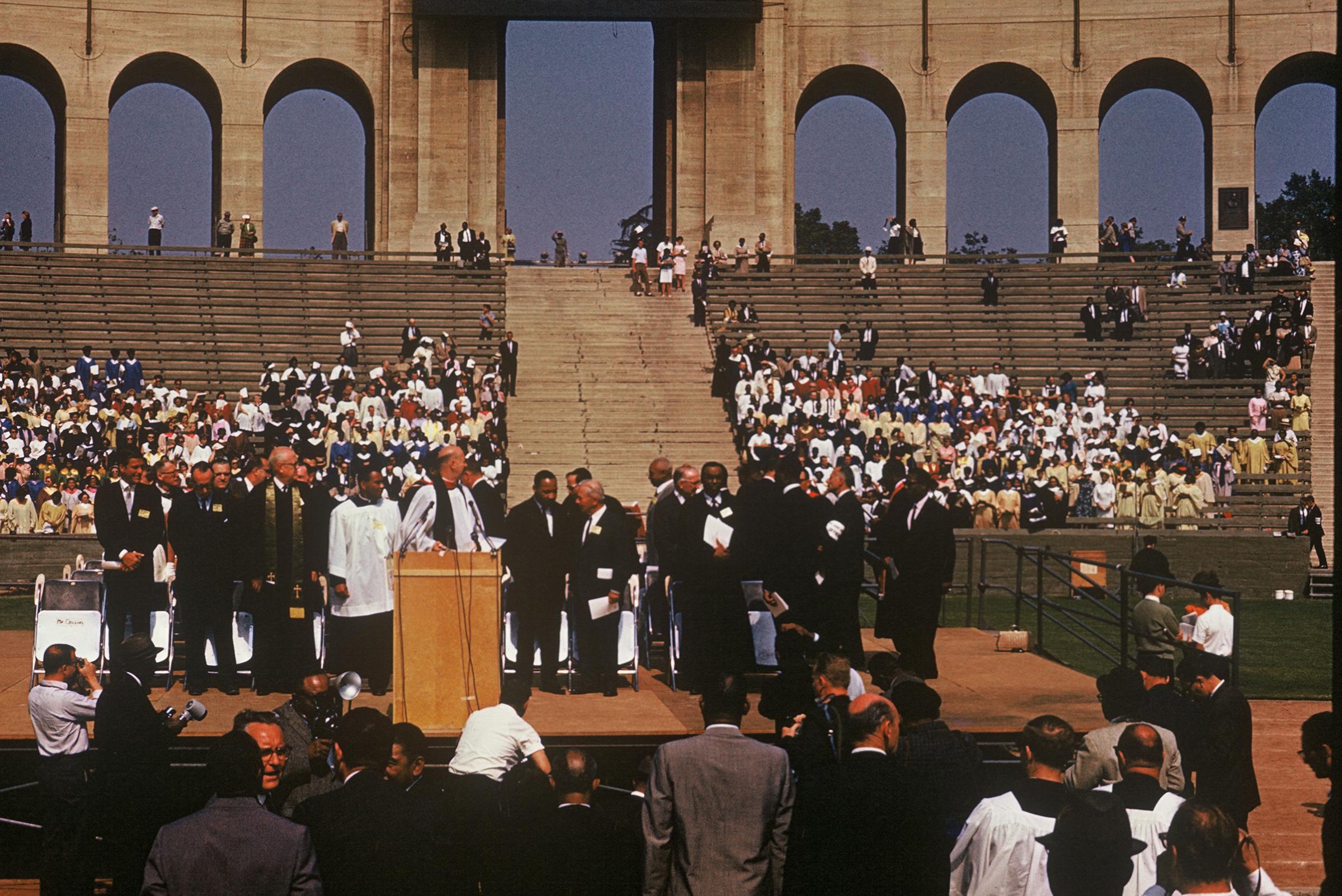
The daughter of a former political aide had no idea she had a piece of history sitting in a drawer.
In May of 1964, less than one year after making his “I have a dream” speech in Washington, D.C., Martin Luther King Jr. spoke at the Los Angeles Memorial Coliseum.
King’s speech that evening highlighted the need for justice and called for an end to segregation as Senators in Washington, D.C., were debating the Civil Rights Act.
“Now is the time to make real the promises of democracy,” King said, echoing language he used in his more famous 1963 speech. “Now is the time to open the floodgates of opportunity and allow now an avalanche of justice to pour upon us. Now is the time to get rid of segregation and discrimination. Now is the time to make justice a reality for all of God’s children. This is the challenge of the hour.”

At the time, Barbara Moss’s father, Jay A. Brown, worked as an assistant to Congressman Thomas Rees. He attended the event, capturing it in color film.
Step Into History: Learn how to experience the 1963 March on Washington in virtual reality
“What me and my mother can figure is that my father probably took his camera with him this day — he always had his camera — and by some miracle popped in color film into the camera,” Moss told TIME.
The resulting photographs show King at the podium and also capture the crowd attending the speech. Moss rediscovered the photos, about 50 years later, after her father passed away in 2013. Though her father was a “purger” (“he threw everything away,” she said) he had kept these developed photos, and it was immediately clear that they showed Martin Luther King Jr. in action. But, during the personally hectic few years that followed, Moss forgot about the pictures.

“In moving, I recently rediscovered the box in a desk drawer and it was like, Oh my God,” she said.
As she would learn from a friend who has worked at the office of printing and photographic services at the Smithsonian, while color film was not rare at the time, many professional photographers used black-and-white film because newspapers did not print photos in color. Knowing that the color photographs had an extra level of interest, and that these had never been published, she decided to share them.

“These are an American treasure, they shouldn’t be in a drawer,” she said. “When I realized how valuable they were I knew we had to do something with them.”
Moss said that, for her, the photos aren’t just special because of their quality — they’re also special because of the enduring relevance of King’s life’s work.
“If Martin Luther King were alive today, what would he be saying now?” she pondered. “His message was so important and resonates today clearly.”
More Must-Reads from TIME
- Cybersecurity Experts Are Sounding the Alarm on DOGE
- Meet the 2025 Women of the Year
- The Harsh Truth About Disability Inclusion
- Why Do More Young Adults Have Cancer?
- Colman Domingo Leads With Radical Love
- How to Get Better at Doing Things Alone
- Michelle Zauner Stares Down the Darkness
Write to Gina Martinez at gina.martinez@time.com